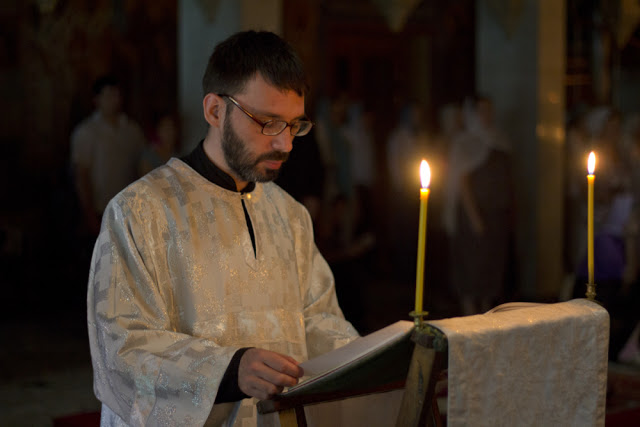
A reader, also called a Lector, Cantor, or Psalti, the Reader is the first order comprising participation in the Priesthood of Christ, and is the second-highest of the minor orders of the Orthodox Church.
It is a sub-clerical order to which a man is tonsured and ordained, setting him apart as blessed by the bishop to read in services and in the Divine Liturgy. Women may not be tonsured or ordained as readers in the Orthodox Church.
Ordination
Immediately before ordination as a reader, the candidate is tonsured as a sign of his submission and obedience upon entry into the clerical state. This is a separate act, making a layperson into a clergyman, and occurs immediately prior to his ordination as a reader.
The ordination itself is, like that of the subdiaconate, through Cheirothesia – literally, “to place hands” – as opposed to Cheirotonia – “to stretch out the hands” – which is practiced at the ordination of bishops, priests and deacons.
After being tonsured, the reader is vested in a short phelonion, which he wears while reading the Epistle for the first time. This short phelon is then removed (and never worn thereafter) and replaced with a sticharion, which the reader
generally wears thereafter whenever he performs his liturgical duties.
generally wears thereafter whenever he performs his liturgical duties.
A reader is usually tonsured by the bishop, though in some traditions, an archpriest or archimandrite may do the tonsure with the bishop’s blessing if he is not available. In monastic communities, the ruling archimandrite may tonsure those monks over which he rules.

Terminology
It is through ordination – not the tonsure – that one is made a reader or subdeacon; this is highlighted by the fact that the tonsure is performed only once and is not repeated before the ordination of a subdeacon. The confusion has arisen by the common reference to a man being “tonsured a reader” which, while widespread, is not technically correct.
Vestments
All degrees of clergy, beginning with Reader, wear the sticharion. The sticharion is a long-sleeved tunic that reaches all the way to the ground. It reminds the wearer that the grace of the Holy Spirit covers him as with a garment of salvation and joy. A reader can be distinguished from an acolyte because the reader will wear an undercassock under his sticharion, and (generally) because a reader’s sticharion will be joined together by buttons on the side of the garment, where an acolyte’s will be sewn up the sides.

Duties
An ordained reader has the following duties:
– Read Old Testament readings during services,
– Read the epistle during the Divine Liturgy and other services,
– Chant psalms,
– Chant the verses for prokeimenons, the alleluia, the antiphons,
– Sing other appointed hymns during the divine services.
In addition to this, the reader will usually:
– Construct the services according to the typicon.
– Sing in the choir.
As a member of minor clergy, a reader – according to his abilities – might be entrusted with the duties of:
– Cantor,
– Catechist,
– Other leadership roles in the community.




